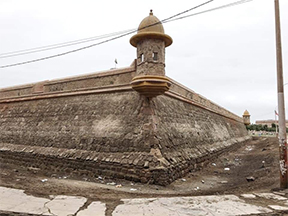The Knight Center for Environmental Journalism recently taught an online environmental journalism to a group of university students in Peru. This is one of the stories produced during that effort. The program was funded by the U.S. Embassy in Lima.
By Luz Cachay Torres
Brunswick is a city on the coastline of Georgia in the United States, and when I first arrived there, I couldn’t stop being shocked by the amount of plastic bags that they use.
At first, I took my own bag whenever I went shopping, but as the days went by, I started to forget it.
Seeing all the people grabbing them didn’t look so bad. I got to collect more bags in one week than I used to in an entire month back at home in Peru.
This situation kept me thinking: Are plastic bags really that bad? Continue reading

 Time has passed and, far from improving, the situation has drastically worsened. Today the Lurin River is drastically polluted, and the cause of this problem is the presence of invaders.
Time has passed and, far from improving, the situation has drastically worsened. Today the Lurin River is drastically polluted, and the cause of this problem is the presence of invaders. This wonderful monument is the pride of many citizens of the region.
This wonderful monument is the pride of many citizens of the region.